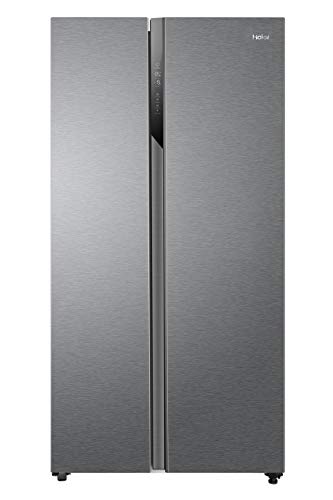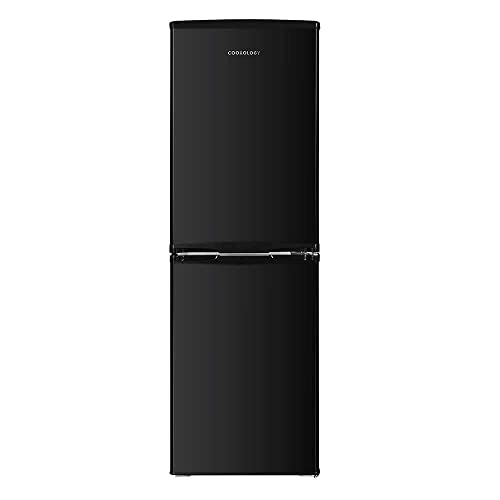
Frydge
Add a review FollowOverview
-
Posted Jobs 0
-
Viewed 91
Company Description
The History Of Fridge Freezer Frost Free
 Why Choose a Fridge Freezer Frost Free?
Why Choose a Fridge Freezer Frost Free?
 If you opt for a fridge freezer frost free it will remove the need to defrost, saving time and effort. They also have more storage than those that don’t have this feature.
If you opt for a fridge freezer frost free it will remove the need to defrost, saving time and effort. They also have more storage than those that don’t have this feature.
Secure the surrounding areas of the kitchen from water drips when defrosting by putting towels or old sheets close to the appliance.
There is no need to defrost.
Fridge Freezers that use Total No Frost technology circulate cool air continuously throughout both compartments. This stops the formation of ice on the walls of the freezer. This is a great option for people who like to store lots of items in the freezer, but don’t like the idea of having to defrost it every year. If you still notice a build-up of ice, the appliance is likely to go through an automated defrost process.
The primary benefit of having a frost-free freezer is the fact that you do not have to defrost it, which could be a lengthy and time-consuming process which can take up to 24 hours each time. However, having a frost-free freezer also means that you can store more food in the freezer because it doesn’t lose storage space to ice.
Another advantage of a frost-free freezer is that it has greater energy efficiency than fridges that have a traditional defrost system, meaning you will reduce your electricity bills. If you do need to defrost your refrigerator freezer, it’s typically due to the fact that it has built up an excessive amount of ice. The ice blocks the refrigeration system from cooling the freezer efficiently.
It is usually due to an inefficient thermostat and doesn’t regulate the temperature in a proper manner. It is also possible that the freezer has been opened and closed often, which can create humidity in the freezer. To prevent this, you should always wait until food is cold before putting it into the freezer, and also make sure that all containers are sealed.
By not overfilling your fridge-freezer it will decrease the chances of it being defrosted. It is recommended to store food in separate containers and use smaller quantities at a time, instead of filling the freezer to capacity. This will ensure that the freezer fan is able to circulate air and not be blocked.
It is also essential to ensure that the door gasket isn’t damaged as this is responsible for keeping the room air out of the freezer and fridge. If the seal is broken warm air can get into the fridge and cause frost to build up on the evaporator. To avoid this from happening, clean the evaporator coil using a special spray, which can help in removing any frost that may have built up.
No more the accumulation of ice
You will have to defrost your freezer less often in the event that there isn’t any ice accumulation. However, if you notice frost building up on the back of your freezer, it could indicate that your fridge freezer is not defrosting correctly. If a refrigerator or freezer defrosts properly, it will stop its cooling system for around 20 minutes every 6 hours, so that the heaters behind the back wall can keep frost from forming on the evaporator coils and the wall behind the freezer. This ensures that the air is able to flow freely through both freezer and refrigerator and stops food items from freezing to a tough consistency.
If your ice buildup is the result of hot air getting into your freezer, you can reduce the risk by making sure that the seal on the door isn’t damaged or blocked. Also, make sure you’re not overfilling your freezer, or storing items in plastic bags or other containers that stop cold air from circulating around them. Be sure that your freezer isn’t too close to a heater or radiator.
If you have to get rid of an accumulation of ice from your freezer, you should avoid using a knife or other sharp object because it can cause damage to the appliance. Instead, disconnect the freezer and let the ice melt. Then, wipe down the inside before plugging it back in.
Alternately, you can put an old towel on the floor in the freezer’s front and then wait for the ice to melt. Then, you can wipe the freezer down with a dry, clean cloth and ensure that the temperature is correct before replenishing it.
The purchase of a refrigerator freezer with frost-free capabilities can save you a lot of time and effort, so be sure to think about this option when choosing your next kitchen appliance. Contact an Abt expert for more advice or assistance in selecting your new freezer. They will be able to locate the ideal appliance that fits your lifestyle and budget. They’ll also be able to help you with installation and any after sales problems you may have.
No more smells
The frost-free models aren’t affected by this problem. In contrast to traditional fridge freezers, where bad smells may find their way into the freezer, and then contaminate food however, the frost-free models are not affected by the same problem. The compressor circulates air to cool them. The air is then cooled to 0degC so that it does not emit smells. It is still essential to store food items in airtight containers or wrap them in polyethylene bags, plastic coated frozen paper, heavy-duty aluminum foil, or similar to minimize the amount of moisture that is in the fridge.
These fridge freezers, despite their name “frost-free” need defrosting. This is because they’re not as efficient as traditional freezers. The evaporator coils in the freezer are located at the back, and the heating element for defrost is used to melt the frost that is formed on the coils. If this isn’t working, the frost can accumulate on the evaporator, leading to cooling issues.
If you don’t use an automated defrost system, you’ll have to manually defrost the freezer periodically. The good thing is that it only takes a couple of minutes and won’t affect the flavor of your food. If you have a Frost Free model with Total No Frost technology, it will never require to be defrosted because it continuously circulates cool air throughout both compartments stopping any ice from ever building up on the cabinet walls.
The smells that emanate from a fridge freezer are caused by volatile chemicals that, in some cases, resemble water and others do not. If the smells are the result of bacteria, the compounds are likely to enter the freezer and cause contamination to the food inside it. If the smells are not natural, they will stay in the fridge until they escape through the vent or are removed by the defrost process.
If you notice odours emanating from the freezer, there is probably a problem with either the seal or cooling process. Moisture may get into the fridge freezer when the freezer door is opened and allows warm air to enter or if food containers are packed tightly enough to restrict airflow through the evaporator.
Easy to clean
Freezers in the fridge that do not require manual defrosting are easier to clean. You can clean the freezer with a baking-soda and water solution when it is empty. Simply mix one tablespoon of baking soda in a quart of warm water, dip a microfiber cloth into it and wipe clean all interior surfaces. If the seal around the door gets dirty then you can clean it. The cooling coils that are located at the back of the fridge are also easier to clean because they don’t have any ice. Be sure not to block the tiny vents inside the freezer either, these are there to allow air to circulate. This is where paper, crumpled up crumbs and twist ties can get caught, which causes the fan to not work.
You may need to place activated charcoal in a container in your freezer to decrease or eliminate the smell. You can purchase this kind of charcoal in the cleaning section of grocery stores.
Before you put your frozen food back in the freezer It’s an ideal idea to line out the floor of the freezer with old towels or cloths so that melting frozen ice doesn’t absorb too much water. Also, be sure to wash your freezer drawers, bins and ice trays prior to placing them back in the freezer.
To avoid the need to defrost, invest in a refrigerator/freezer with Total No Frost Technology. This technology keeps the freezer compartment at an even 0°F and Frydge circulates cool air to keep ice from forming on the wall of the cabinet. This option will help you save money and time in the long-term, as well as keep your food fresher for longer.
You should still defrost a conventional freezer at least once per year or whenever the ice layer has reached 1/4 inch in thickness. Also, make sure that the door gasket is sealing properly by closing the freezer with the back of a piece of paper. If it falls off easily the gasket should be replaced.
